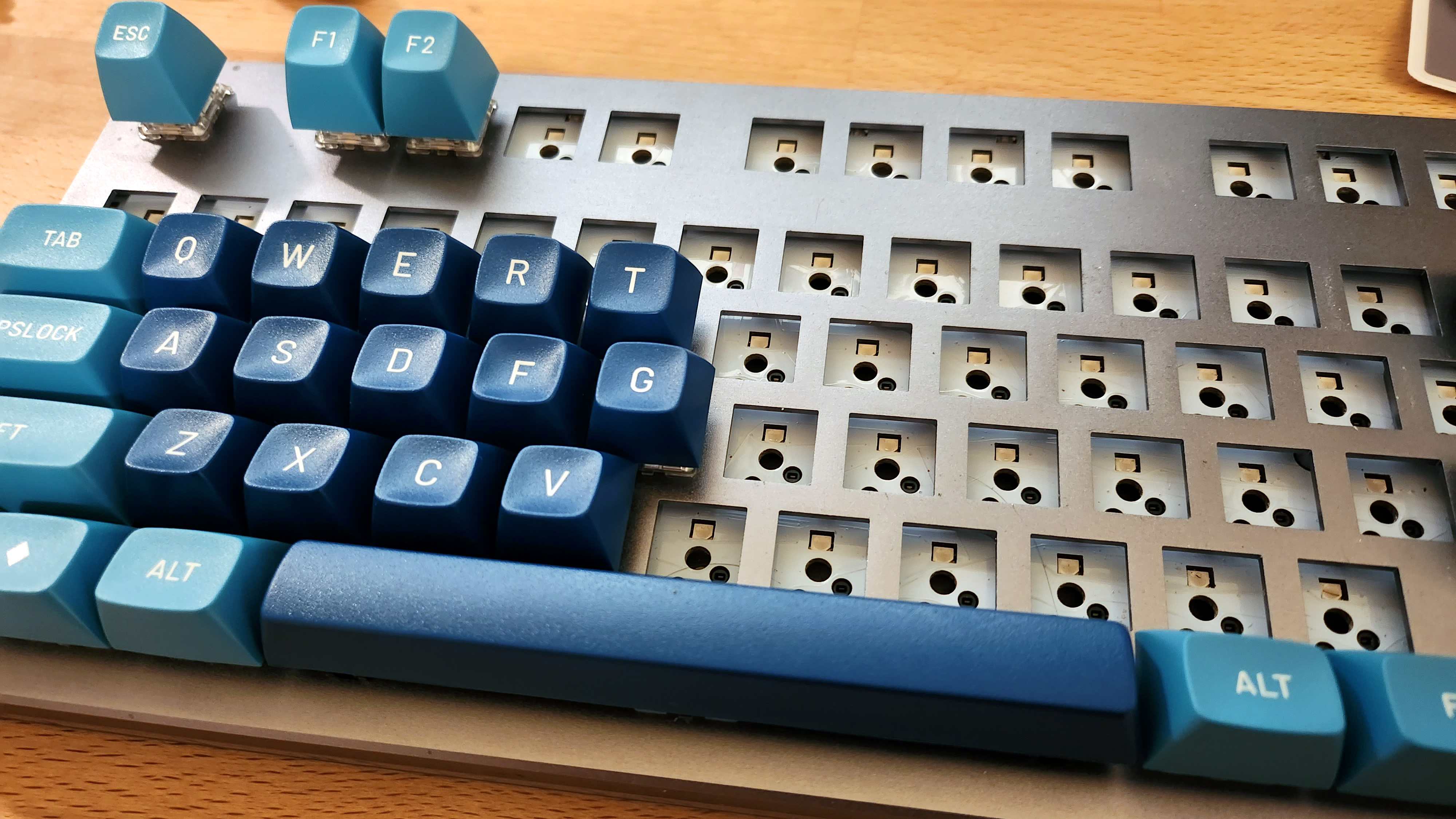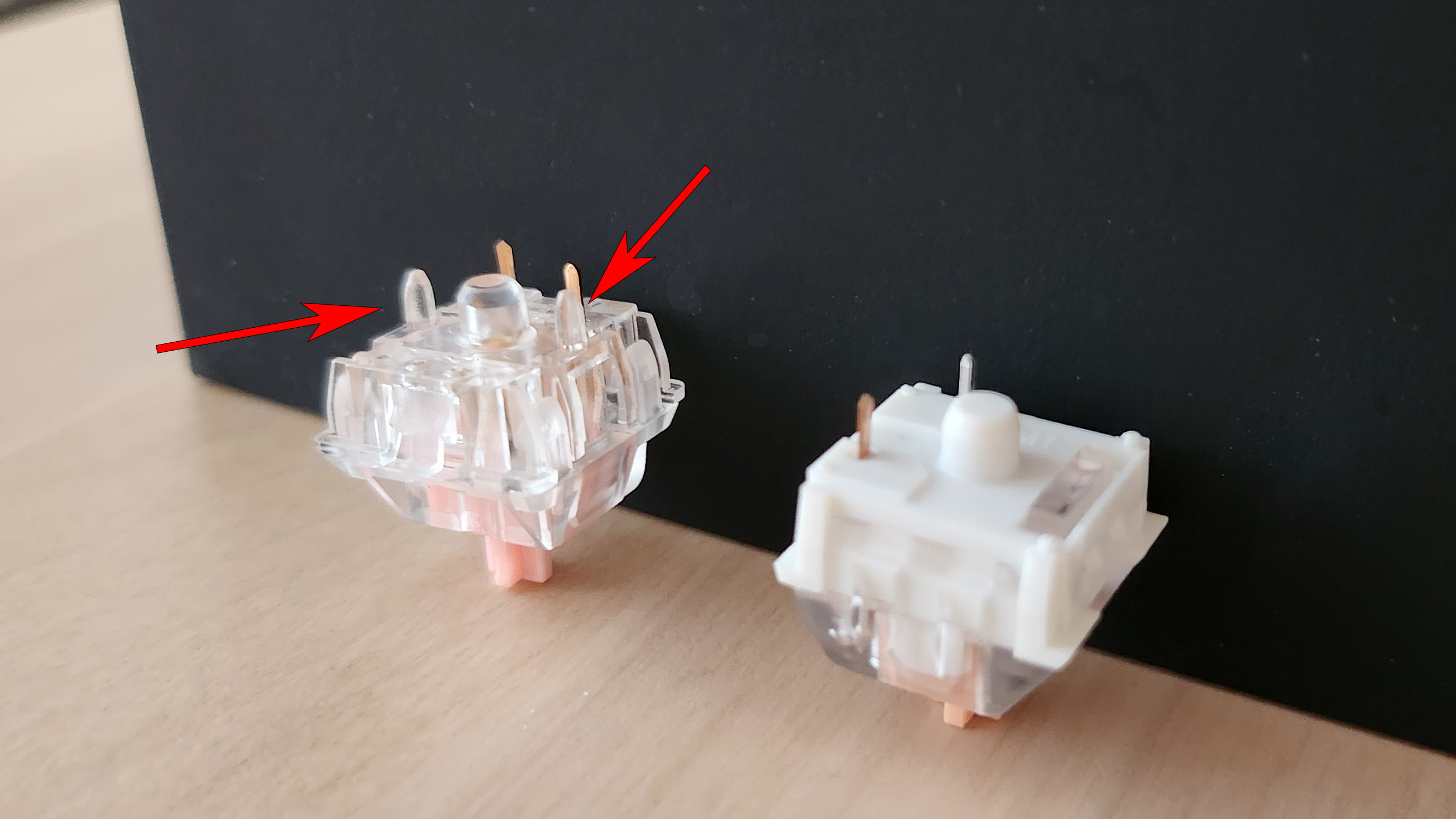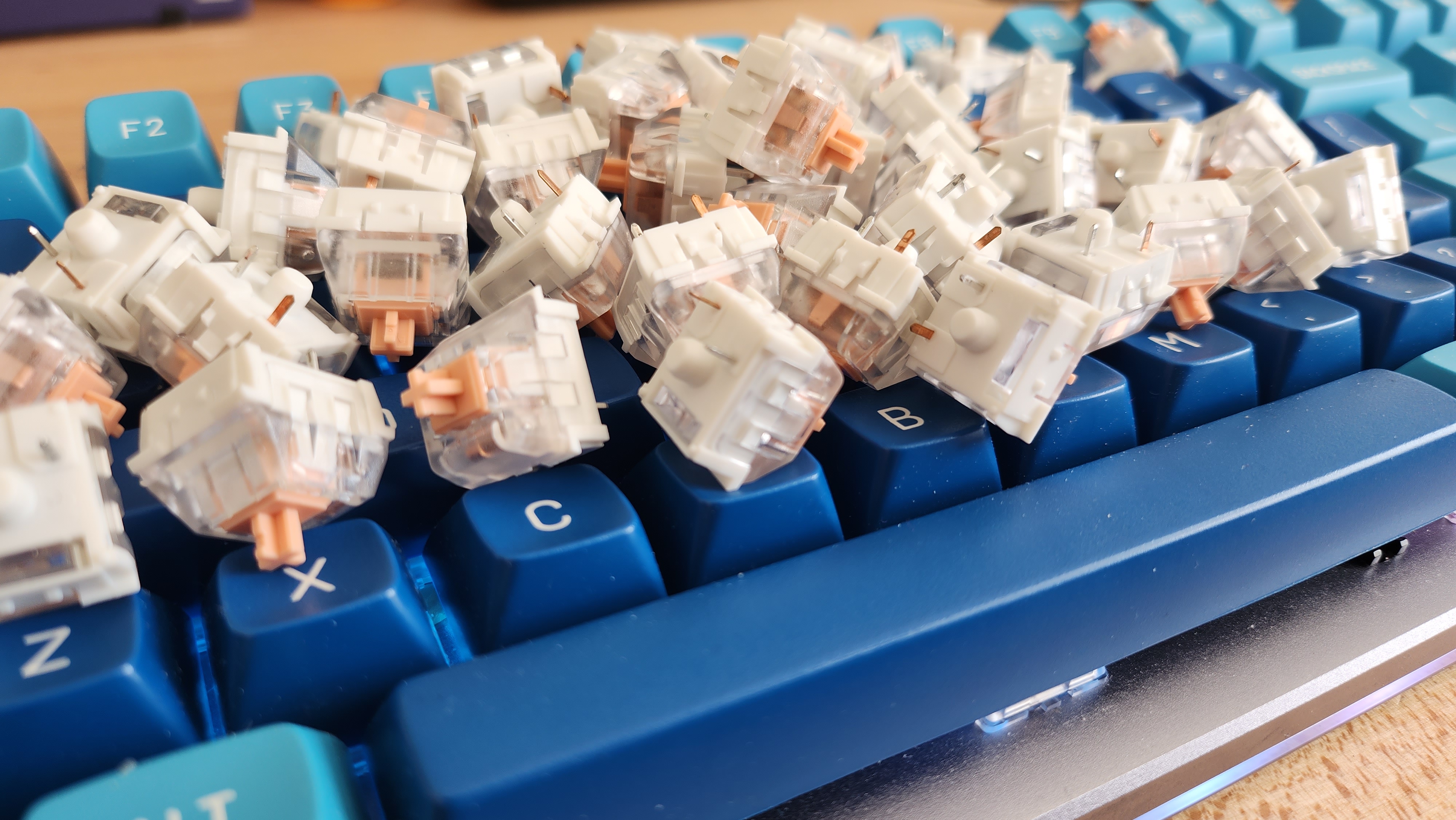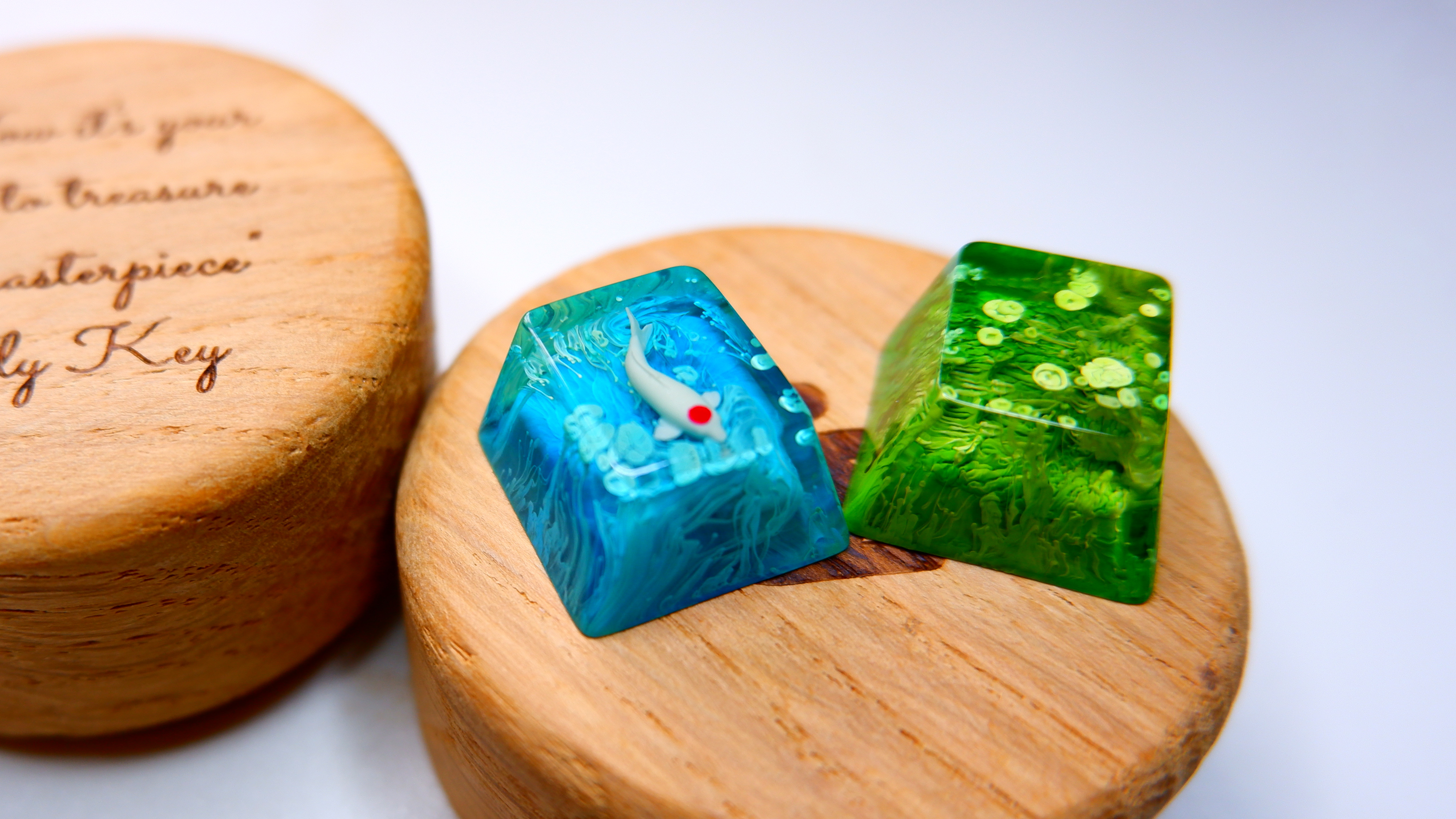Using a hot-swappable keyboard cherry-pilled me into a custom keyboard obsession
A year with the Drop CTRL and the freedom to swap switches and keycaps turned me into a mech head.

A decade ago PC gamers started ditching their mushy, cheapo rubber dome keyboards en masse for punchy mechanical boards with Cherry Brown or Black or Red switches. That shift led to dozens and then hundreds of competing switch types, each with their own distinct feel. Buying any old mechanical keyboard was now the starting gun rather than the finish line for this corner of our hobby: to really get into it, you could pick custom keycaps, mod your keyboard to change its sound profile, or even alienate your friends and family by lubing your switches to change how they feel.
To me the most exciting thing about this blossoming subculture is the arrival of hot-swappable keyboards: you can now change out every switch in your keyboard with no soldering. They make customizing your keyboard much more approachable. But at the same time, there are an intimidating number of options out there, and I learned a whole lot by mixing and matching switches and keycaps that I wish I'd known up front.
Know the difference between 5-pin keyboards and 3-pin keyboards

Here are two different mechanical key switches. Notice the difference?
In addition to the two metal pins that make electrical contact with the board, many switches include an extra pair of stabilizer legs. These legs allow a switch to be PCB-mounted, or soldered straight to a PCB. 3-pin switches, on the other hand, are designed to go into a stabilizing plate, aka plate-mounted—and not all plates have the extra sockets for a 5-pin switch.
If you want to save yourself a whole lot of hassle, either buy a hot-swappable keyboard like the GMMK Pro that does support 5-pin switches in its plate, or make damn sure that the switches you want to buy use the 3-pin design. Otherwise you'll end up like me, using a pair of clippers or a razor blade to slice off upwards of 150 little pieces of plastic. It is not fun.
My wrist was sore for days after I outfitted the keyboard I picked out, the Drop CTRL with 87 snipped 67g Zealio tactile switches, and it added a solid couple hours to the process of swapping out one set of switches to another. It's an experience I was willing to suffer through once, but tiresome enough that I plan to switch to a 5-pin board in the future to avoid ever having to do it again.
Do not settle for switches that aren't 100% reliable

I spent a year using the Drop CTRL with Drop's custom Halo True switches. In hindsight, I can't believe I put up with them for that long.
Keep up to date with the most important stories and the best deals, as picked by the PC Gamer team.
Our guide to the best gaming keyboards includes several models that support hot-swapping switches:
- Wooting Two HE
- Mountain Everest Max
- Keychron K2
- Ducky One 3
The Halo True switches routinely gave me double letter inputs (aka "chatter") across several different keys: most mornings I'd enter my Windows password, only to have to re-type it a couple times because I'd unknowingly added an errant letter. Argh. In Slack I'd constantly be throwing in double letters and feel like a sloppy typist if I didn't go back and edit them out. At first I thought it was just a learning curve, and I was typing too hard as I moved from years on Cherry MX Brown switches to the Trues.
Nope. They're either unreliable switches, or maybe a few were improperly installed, but after a year I was still having the exact same problems (I've seen scattered reports of chatter issues online with the Drop CTRL and Halo True switches, but nothing indicating an epidemic—quality control may be the real culprit here). As soon as I swapped to a set of Zealios, my double inputs completely disappeared.
You should give yourself time to adjust to a new switch before deciding whether or not you like it, but you deserve better than to suffer through using a board that frustrates you. Even though a hot swappable keyboard is much easier to customize than one that requires soldering, laziness was still what held me back: I never felt the desire to pull everything apart and put it back together again when I could be playing a game instead. But the relief I felt when those double inputs evaporated drove home how annoying they'd been to live with.
There's a huge variety of tactile switches out there
Outside of some unique exceptions, there are three types of mechanical switches:
- Linear - Smooth stroke till you hit the bottom
- Clicky - Loud, with a major "bump" in the press
- Tactile -Still a bump, but gentler.
Obviously the three types of switches feel very different, but you should also be aware of how different switches within each type can feel, too.
This is especially true with tactile switches, where the "bump" at the actuation point can be pronounced or subtle, and where in the press you feel that bump can vary dramatically too. Just look at this lengthy Reddit post about the minutia of different tactile switches.
If you've mostly experienced tactile switches via Cherry Browns like I had up to this point, check out the video above for a sense of just how much variety there is out there now.
If you really care about RGB, make sure to buy "shine through" or "pudding" keycaps

I switched from the Drop CTRL's stock keycaps to a set of gorgeous MT3 Dashers, and only after I started swapping them did I notice a major difference: the RGB lighting can't shine through the lettering on these keys. They're solid, with white legends on top.
This isn't a dealbreaker for me. I'm fine with the backlight coming around the edges of the keys, and I don't like the distraction of a moving RGB pattern or each individual key changing colors as I press it. But if you do love your RGB, there are certain types of keycaps better suited to really showing off your lighting. There's a lot of terminology that relates to types of keycaps, but here's a few you should know related to backlighting:
Doubleshot keycaps are made of two pieces of plastic that have been molded together, one for the key housing and the other for the legend. This means the legends will never wear off, because it's solid plastic rather than printed on top—and it also means RGB lighting can shine through the legend. The most important takeaway here is that a key being doubleshot does not guarantee RGB lighting can shine through, because the legend plastic could be opaque rather than translucent.
"Shine through" and "backlit" are two terms commonly used to refer to doubleshot keycaps that have transparent/translucent legends. You'll even see some "sidelit" keys where the legends are printed on the front face of the keys instead of on top.
ABS and PBT are two types of plastic used to make keycaps, and both can be injection molded to form doubleshot keys. There are some textural look & feel differences between the two plastics, but either can allow for backlight to shine through.
Pudding keycaps allow for tons of RGB light to shine through, because the sides of each keycaps are made from a translucent plastic, while the top is still an opaque color with a translucent legend. Check out these HyperX pudding caps for an example.
Customizing switches and keycaps can be as cheap or expensive as you want it to be

We've written before about how easy it is to drop hundreds or even thousands of dollars when you start getting obsessed with custom keyboards. It's true. I love the look of these Drop Belafonte custom keycaps (Day-O!) but they're $155 by themselves; if you pair those with a popular set of boutique switches, like the Holy Pandas, that's another $85 on top of the cost of the actual keyboard!
Mechanical keyboard parts are kind of like audiophile gear: as a newbie you're likely not going to pick up on a lot of the minute differences diehards talk about. Getting into the hobby can be a whole lot more affordable if you want it to, and you can always upgrade later as you learn what you like.
For example, if you shop on AliExpress a full keyboard's worth of Cherry Brown switches can cost just $40. Switch to a budget brand like Gateron, and you can get a full board's worth for under $30. Even Drop sells some of its nice doubleshot, shinethrough keycap sets at cheap prices, like these Skylight Bamboos for $25.
Don't get lured into spending hundreds off the bat, or you might end up thinking "that's it?" when the end result is a nice keyboard, not a life-changing one. Because, well, you're probably not gonna stop with just one.
You're probably going to get cherry-pilled

I think this part of my experience is near-universal: once I had completely swapped switches and keycaps, I couldn't stop thinking about what other switches or keycaps I might like more. It turns out the 67g Zealios are a tad heavy for my taste, and I'm not sure I like the taller profile MT3 keycaps as much as I prefer lower profile ones, even though I do love how they look.
Days after I put the Drop CTRL back together I bought a cheap Tester68 keyboard off AliExpress and started filling it in with a variety of switches to see what I like most. PC Gamer brand director Tim Clark has coined this phenomenon getting "cherry-pilled"—my brain is now rewired to daydream about all the possibilities out there.
I spent a year not changing out my switches because I could never muster up the energy, but now that I'm a convert, I'm thinking absurd things like "Well it wouldn't be that ridiculous to have one keyboard for typing and one for gaming." And, uh, maybe another just for testing out different switches and keycaps without dismantling a daily driver?
If you too are cherry-pilled, check out some of our other articles that dive deeper into the world of custom mechanical keyboards:

Wes has been covering games and hardware for more than 10 years, first at tech sites like The Wirecutter and Tested before joining the PC Gamer team in 2014. Wes plays a little bit of everything, but he'll always jump at the chance to cover emulation and Japanese games.
When he's not obsessively optimizing and re-optimizing a tangle of conveyor belts in Satisfactory (it's really becoming a problem), he's probably playing a 20-year-old Final Fantasy or some opaque ASCII roguelike. With a focus on writing and editing features, he seeks out personal stories and in-depth histories from the corners of PC gaming and its niche communities. 50% pizza by volume (deep dish, to be specific).


